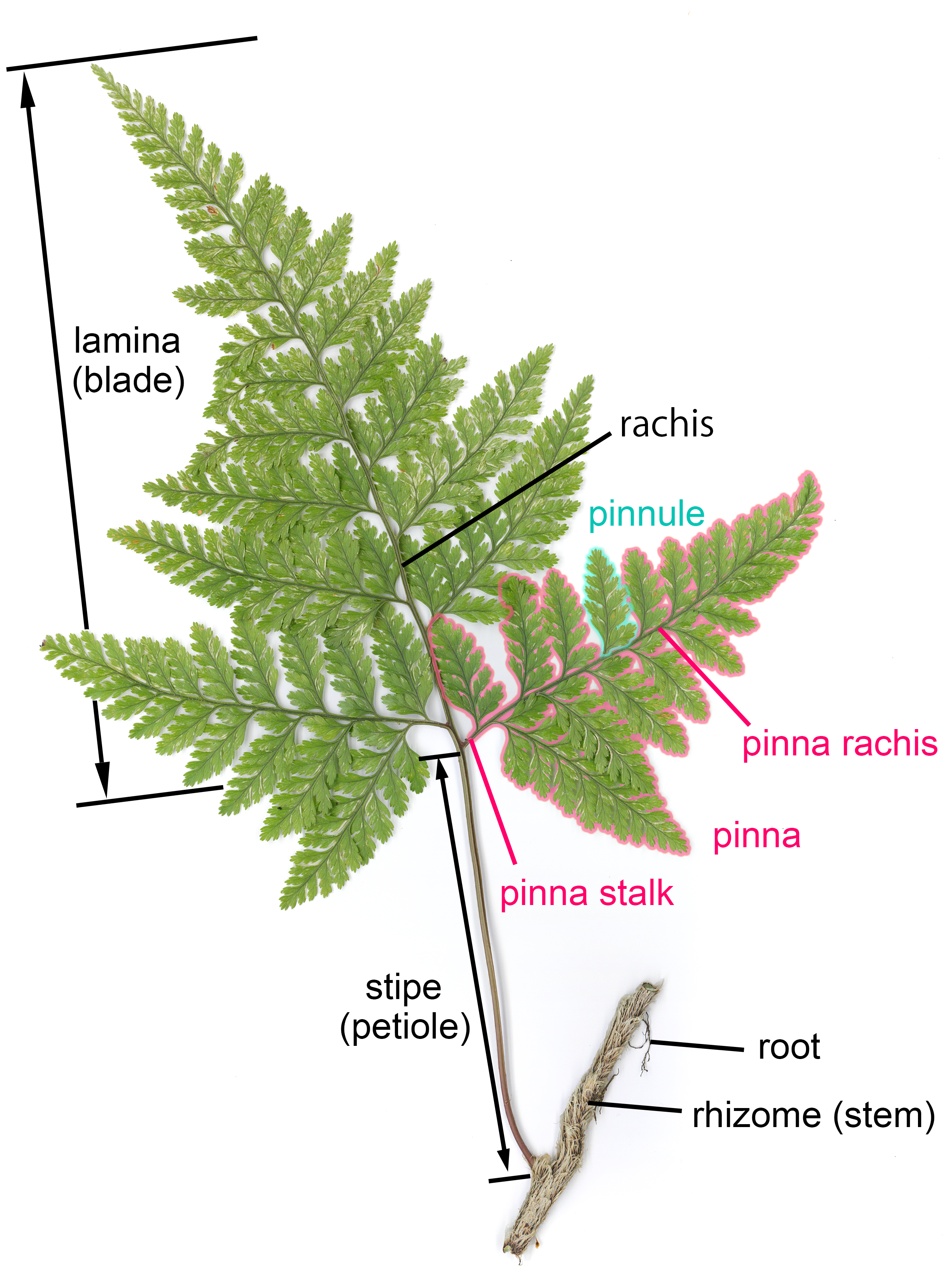|
Alsophila Arfakensis
''Alsophila arfakensis'', synonym ''Cyathea kanehirae'', is a species of tree fern native to western New Guinea, where it grows in montane forest at an altitude of 1600–2700 m. The trunk of this plant is erect and 1–4 m tall. Fronds may be bi- or tripinnate and 1–2 m in length. The rachis is smooth, while the stipe is dark and warty. The stipe is covered with flat, brown, scattered scales. Sori are borne near the fertile pinnule midvein. They are protected by small indusia that are cup-like in appearance. Large and Braggins (2004) note that Rolla Tryon (1970) regarded ''Alsophila arfakensis'' and ''Cyathea kanehirae'' as synonyms A synonym is a word, morpheme, or phrase that means precisely or nearly the same as another word, morpheme, or phrase in a given language. For example, in the English language, the words ''begin'', ''start'', ''commence'', and ''initiate'' are a ..., although it is still possible that they represent separate species. References arfaken ... [...More Info...] [...Related Items...] OR: [Wikipedia] [Google] [Baidu] |
Synonym (taxonomy)
In taxonomy, the scientific classification of living organisms, a synonym is an alternative scientific name for the accepted scientific name of a taxon. The Botanical nomenclature, botanical and Zoological nomenclature, zoological codes of nomenclature treat the concept of synonymy differently. * In nomenclature, botanical nomenclature, a synonym is a Binomial nomenclature, scientific name that applies to a taxon that now goes by a different scientific name. For example, Carl Linnaeus, Linnaeus was the first to give a scientific name (under the currently used system of scientific nomenclature) to the Norway spruce, which he called ''Pinus abies''. This name is no longer in use, so it is now a synonym of the current scientific name, ''Picea abies''. * In zoology, moving a species from one genus to another results in a different Binomial nomenclature, binomen, but the name is considered an alternative combination rather than a synonym. The concept of synonymy in zoology is reserved f ... [...More Info...] [...Related Items...] OR: [Wikipedia] [Google] [Baidu] |
Cyatheales
The order Cyatheales, which includes most tree ferns, is a Taxonomy (biology), taxonomic order of the fern class, Polypodiopsida. No clear morphology (biology), morphological features characterize all of the Cyatheales, but DNA sequence data indicate the order is monophyly, monophyletic. Some species in the Cyatheales have tree-like growth forms from a vertical rhizome, others have shorter or horizontal expanding rhizomes. Some species have scales on the stems and leaves, while others have hairs. However, most plants in the Cyatheales are tree ferns and have trunk-like stems up to tall. It is unclear how many times the tree form has evolved and been lost in the order.Judd, W.S., C.S. Campbell, E.A. Kellogg, P.F. Stevens, and M.J. Donoghue (Eds.) 2008. Plant Systematics: A Phylogenetic Approach, Third Edition. Sinauer Associates, Sunderland, Massachusetts, USA. Description While the Cyatheales have been shown to be monophyletic through molecular analysis, no prominent morphologic ... [...More Info...] [...Related Items...] OR: [Wikipedia] [Google] [Baidu] |
Western New Guinea
Western New Guinea, also known as Papua, Indonesian New Guinea, and Indonesian Papua, is the western half of the island of New Guinea, formerly Dutch and granted to Indonesia in 1962. Given the island is alternatively named Papua, the region is also called West Papua (). It is one of the seven geographical units of Indonesia in ISO 3166-2:ID. Lying to the west of Papua New Guinea and geographically a part of the Australian continent, the territory is almost entirely in the Southern Hemisphere and includes the Biak and Raja Ampat archipelagoes. The region is predominantly covered with rainforest where traditional peoples live, including the Dani of the Baliem Valley. A large proportion of the population live in or near coastal areas. The largest city is Jayapura. The island of New Guinea has been populated for tens of thousands of years. European traders began frequenting the region around the late 16th century due to spice trade. In the end, the Dutch Empire emerged ... [...More Info...] [...Related Items...] OR: [Wikipedia] [Google] [Baidu] |
Frond
A frond is a large, divided leaf. In both common usage and botanical nomenclature, the leaves of ferns are referred to as fronds and some botanists restrict the term to this group. Other botanists allow the term frond to also apply to the large leaves of cycads, as well as palms (Arecaceae) and various other flowering plants, such as mimosa or sumac. "Frond" is commonly used to identify a large, compound leaf, but if the term is used botanically to refer to the leaves of ferns and algae it may be applied to smaller and undivided leaves. Fronds have particular terms describing their components. Like all leaves, fronds usually have a stalk connecting them to the main stem. In botany, this leaf stalk is generally called a Petiole (botany), petiole, but in regard to fronds specifically it is called a Stipe (botany), stipe, and it supports a flattened blade (which may be called a lamina), and the continuation of the stipe into this portion is called the rachis. The blades may be ... [...More Info...] [...Related Items...] OR: [Wikipedia] [Google] [Baidu] |
Bipinnate
The following terms are used to describe leaf morphology in the description and taxonomy of plants. Leaves may be simple (that is, the leaf blade or 'lamina' is undivided) or compound (that is, the leaf blade is divided into two or more leaflets). The edge of the leaf may be regular or irregular, and may be smooth or have hair, bristles, or spines. For more terms describing other aspects of leaves besides their overall morphology see the leaf article. The terms listed here all are supported by technical and professional usage, but they cannot be represented as mandatory or undebatable; readers must use their judgement. Authors often use terms arbitrarily, or coin them to taste, possibly in ignorance of established terms, and it is not always clear whether because of ignorance, or personal preference, or because usages change with time or context, or because of variation between specimens, even specimens from the same plant. For example, whether to call leaves on the same tree "ac ... [...More Info...] [...Related Items...] OR: [Wikipedia] [Google] [Baidu] |
Tripinnate
Pinnation (also called pennation) is the arrangement of feather-like or multi-divided features arising from both sides of a common axis. Pinnation occurs in biological morphology, in crystals, such as some forms of ice or metal crystals, and in patterns of erosion or stream beds. The term derives from the Latin word ''pinna'' meaning "feather", "wing", or "fin". A similar concept is "pectination", which is a comb-like arrangement of parts (arising from one side of an axis only). Pinnation is commonly referred to in contrast to "palmation", in which the parts or structures radiate out from a common point. The terms "pinnation" and "pennation" are cognate, and although they are sometimes used distinctly, there is no consistent difference in the meaning or usage of the two words.Jackson, Benjamin, Daydon; ''A Glossary of Botanic Terms with their Derivation and Accent''. Gerald Duckworth & Co. London, 4th ed 1928. Plants Botanically, pinnation is an arrangement of discrete stru ... [...More Info...] [...Related Items...] OR: [Wikipedia] [Google] [Baidu] |
Rachis
In biology, a rachis (from the [], "backbone, spine") is a main axis or "shaft". In zoology and microbiology In vertebrates, ''rachis'' can refer to the series of articulated vertebrae, which encase the spinal cord. In this case the ''rachis'' usually forms the supporting axis of the body and is then called the spine or vertebral column. ''Rachis'' can also mean the central shaft of pennaceous feathers. In the gonad of the invertebrate nematode '' Caenorhabditis elegans'', a rachis is the central cell-free core or axis of the gonadal arm of both adult males and hermaphrodites where the germ cells have achieved pachytene and are attached to the walls of the gonadal tube. The rachis is filled with cytoplasm. In botany In plants, a rachis is the main axis of a compound structure. It can be the main stem of a compound leaf, such as in '' Acacia'' or ferns, or the main, flower-bearing portion of an inflorescence In botany, an inflorescence is a group or cluster of ... [...More Info...] [...Related Items...] OR: [Wikipedia] [Google] [Baidu] |
Stipe (botany)
In botany, a stipe is a stalk that supports some other structure. The precise meaning is different depending on which taxonomic group is being described. file:Helicteres-Yucatán-Flowers.jpg, The long stipe of a '' Helicteres'' flower. file:Helicteres-Yucatán-Fruits.jpg, remains as each flower forms a fruit. In the case of ferns, the stipe is only the petiole from the rootstock to the beginning of the leaf tissue, or lamina. The continuation of the structure within the lamina is then termed a rachis. In flowering plants, the term is often used in reference to a stalk that sometimes supports a flower's ovary. In orchids, the stipe or caudicle is the stalk-like support of the pollinia. It is a non-viscid band or strap connecting the pollinia with the viscidium (the viscid part of the rostellum or beak). A stipe is also a structure found in organisms that are studied by botanists but that are no longer classified as plants. It may be the stem-like part of the thallus of a ... [...More Info...] [...Related Items...] OR: [Wikipedia] [Google] [Baidu] |
Scale (zoology)
In zoology, a scale (; ) is a small rigid plate (animal anatomy), plate made out of keratin that grows out of Vertebrate animals' skin to provide protection. In lepidopterans (butterflies and moths), scales are plates on the surface of the insect wing, made out of chitin instead of keratin, and provide coloration. Scales are quite common and have evolved multiple times through convergent evolution, with varying structure and function. Scales are generally classified as part of an organism's integumentary system. There are various types of scales according to the shape and class (biology), class of an animal. Fish scales Fish scales are skin, dermally derived, specifically in the mesoderm. This fact distinguishes them from reptile scales paleontologically. Genetically, the same genes involved in tooth and hair development in mammals are also involved in scale development. File:Ganoid scales.png, Ganoid scales on a carboniferous fish ''Amblypterus striatus'' File:Denticules cutan� ... [...More Info...] [...Related Items...] OR: [Wikipedia] [Google] [Baidu] |
Sorus
A sorus (: sori) is a cluster of sporangia (structures producing and containing spores) in ferns and fungi. A coenosorus (: coenosori) is a compound sorus composed of multiple, fused sori. Etymology This Neo-Latin word is from Ancient Greek σωρός (''sōrós'' 'stack, pile, heap'). Structure In lichens and other fungi, the sorus is surrounded by an external layer. In some red algae, it may take the form of depression into the thallus. In ferns, the sori form a yellowish or brownish mass on the edge or underside of a fertile frond. In some species, they are protected during development by a scale or film of tissue called the indusium (: indusia), which forms an umbrella-like cover. Life cycle significance Sori occur on the sporophyte generation, the sporangia within producing haploid meiospores. As the sporangia mature, the indusium shrivels so that spore release is unimpeded. The sporangia then burst and release the spores. As an aid to identification The shape, arrang ... [...More Info...] [...Related Items...] OR: [Wikipedia] [Google] [Baidu] |
Pinnule
A leaflet (occasionally called foliole) in botany is a leaf-like part of a compound leaf. Though it resembles an entire leaf, a leaflet is not borne on a main plant stem or branch, as a leaf is, but rather on a petiole or a branch of the leaf. Compound leaves are common in many plant families and they differ widely in morphology. The two main classes of compound leaf morphology are palmate and pinnate. For example, a ''hemp'' plant has palmate compound leaves, whereas some species of ''Acacia'' have pinnate leaves. The ultimate free division (or leaflet) of a compound leaf, or a pinnate subdivision of a multipinnate leaf is called a pinnule or pinnula. Image:Ветвь акации.jpg, Pinnate leaf of a legume with 10 leaflets Image:Mimosa Pudica.gif, ''Mimosa pudica'' folding leaflets inward. See also * Compound leaf A leaf (: leaves) is a principal appendage of the stem of a vascular plant, usually borne laterally above ground and specialized for photosynthes ... [...More Info...] [...Related Items...] OR: [Wikipedia] [Google] [Baidu] |
Indusium
A sorus (: sori) is a cluster of sporangia (structures producing and containing spores) in ferns and fungi. A coenosorus (: coenosori) is a compound sorus composed of multiple, fused sori. Etymology This Neo-Latin word is from Ancient Greek σωρός (''sōrós'' 'stack, pile, heap'). Structure In lichens and other fungi, the sorus is surrounded by an external layer. In some red algae, it may take the form of depression into the thallus. In ferns, the sori form a yellowish or brownish mass on the edge or underside of a fertile frond. In some species, they are protected during development by a scale or film of tissue called the indusium (: indusia), which forms an umbrella-like cover. Life cycle significance Sori occur on the sporophyte generation, the sporangia within producing haploid meiospores. As the sporangia mature, the indusium shrivels so that spore release is unimpeded. The sporangia then burst and release the spores. As an aid to identification The shape, arrang ... [...More Info...] [...Related Items...] OR: [Wikipedia] [Google] [Baidu] |





